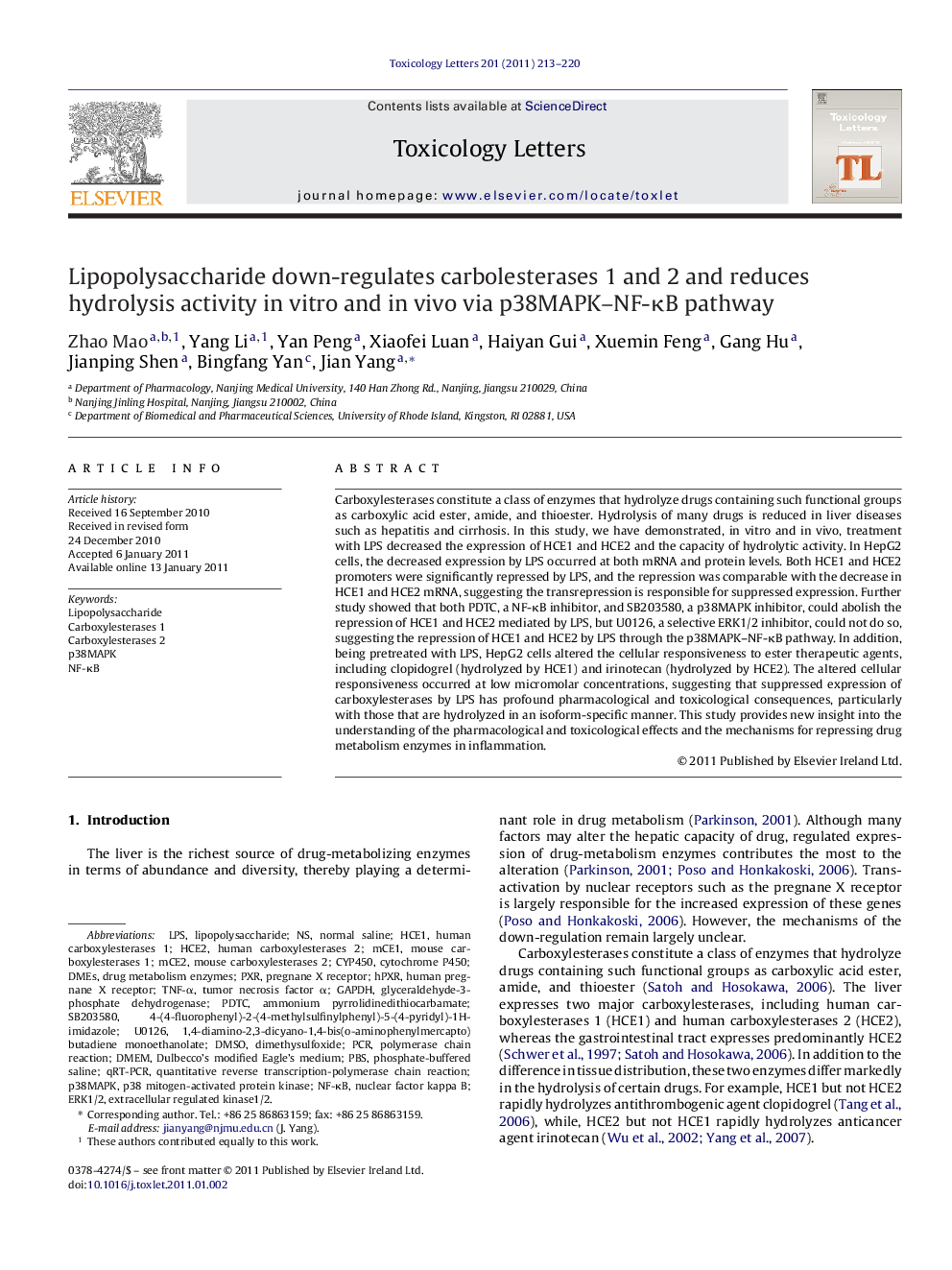| Article ID | Journal | Published Year | Pages | File Type |
|---|---|---|---|---|
| 5860770 | Toxicology Letters | 2011 | 8 Pages |
Abstract
Carboxylesterases constitute a class of enzymes that hydrolyze drugs containing such functional groups as carboxylic acid ester, amide, and thioester. Hydrolysis of many drugs is reduced in liver diseases such as hepatitis and cirrhosis. In this study, we have demonstrated, in vitro and in vivo, treatment with LPS decreased the expression of HCE1 and HCE2 and the capacity of hydrolytic activity. In HepG2 cells, the decreased expression by LPS occurred at both mRNA and protein levels. Both HCE1 and HCE2 promoters were significantly repressed by LPS, and the repression was comparable with the decrease in HCE1 and HCE2 mRNA, suggesting the transrepression is responsible for suppressed expression. Further study showed that both PDTC, a NF-κB inhibitor, and SB203580, a p38MAPK inhibitor, could abolish the repression of HCE1 and HCE2 mediated by LPS, but U0126, a selective ERK1/2 inhibitor, could not do so, suggesting the repression of HCE1 and HCE2 by LPS through the p38MAPK-NF-κB pathway. In addition, being pretreated with LPS, HepG2 cells altered the cellular responsiveness to ester therapeutic agents, including clopidogrel (hydrolyzed by HCE1) and irinotecan (hydrolyzed by HCE2). The altered cellular responsiveness occurred at low micromolar concentrations, suggesting that suppressed expression of carboxylesterases by LPS has profound pharmacological and toxicological consequences, particularly with those that are hydrolyzed in an isoform-specific manner. This study provides new insight into the understanding of the pharmacological and toxicological effects and the mechanisms for repressing drug metabolism enzymes in inflammation.
Keywords
NF-κB4-(4-fluorophenyl)-2-(4-methylsulfinylphenyl)-5-(4-pyridyl)-1H-imidazolehCE1dimethysulfoxideSB203580human pregnane X receptorDMEsPDTCCYP450PXRp38MAPKU0126hPXRqRT-PCRPBSLPSDMEMGAPDHDMSOERK1/2Dulbecco's modified Eagle's mediumAmmonium pyrrolidinedithiocarbamatetumor necrosis factor αnormal salineCytochrome P450TNF-αnuclear factor kappa BlipopolysaccharidePhosphate-buffered salinequantitative reverse transcription-polymerase chain reactionpolymerase chain reactionPCRp38 mitogen-activated protein kinaseglyceraldehyde-3-phosphate dehydrogenasePregnane X receptor
Related Topics
Life Sciences
Environmental Science
Health, Toxicology and Mutagenesis
Authors
Zhao Mao, Yang Li, Yan Peng, Xiaofei Luan, Haiyan Gui, Xuemin Feng, Gang Hu, Jianping Shen, Bingfang Yan, Jian Yang,
